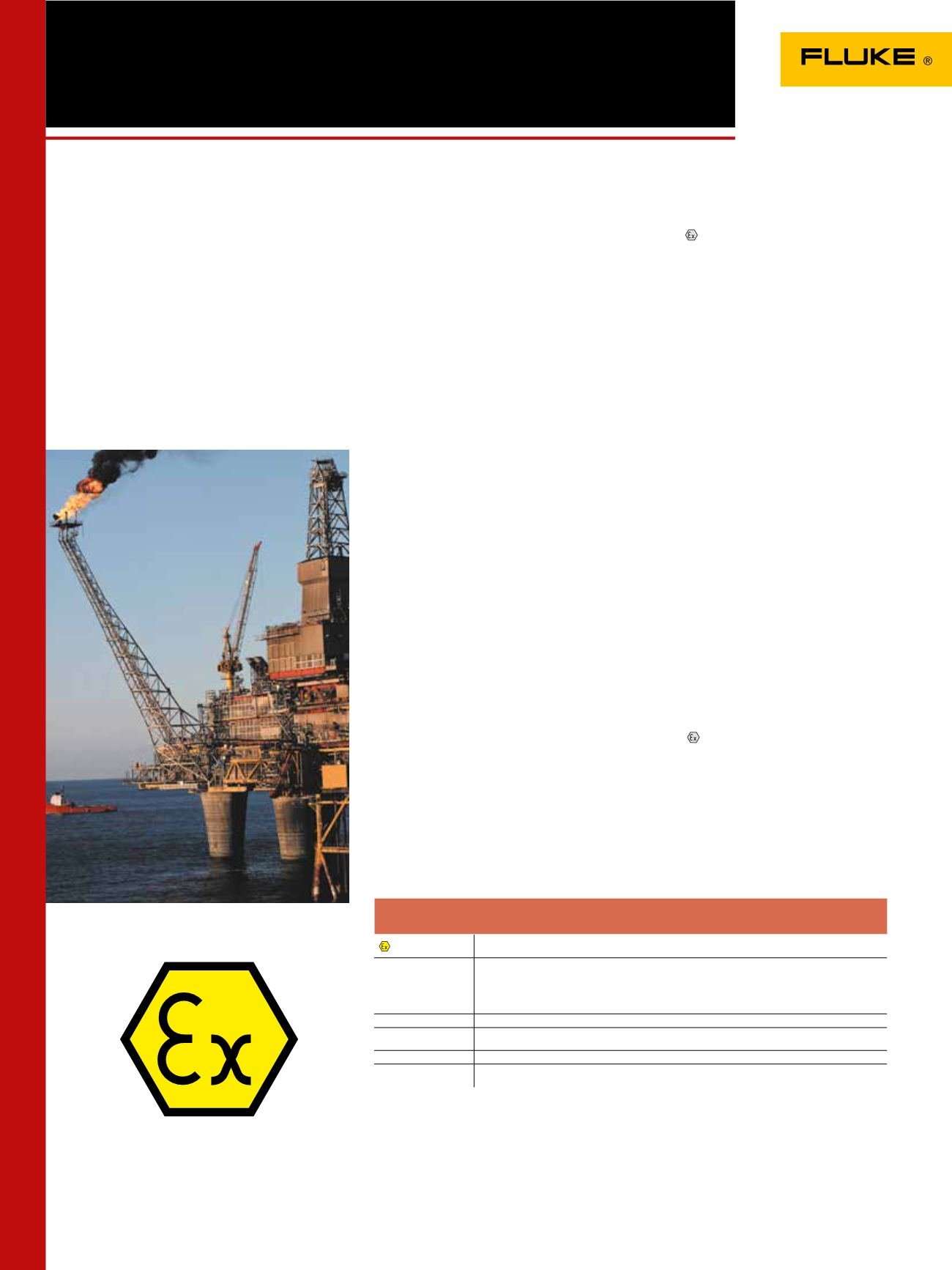

134
What is “Intrinsically Safe”?
Intrinsically safe standards apply to all
equipment that can create one or more
of a range of defined potential explosion
sources:
• Electrical sparks
• Electrical arcs
• Flames
• Hot surfaces
• Static electricity
• Electromagnetic radiation
• Chemical reactions
• Mechanical impact
• Mechanical friction
• Compression ignition
• Acoustic energy
• Ionizing radiation
What industries are intrinsically
safe products designed for?
• Petro-chemical
• Oil platforms and refineries
• Pharmaceutical
• Bulk materials (e.g. grain)
• Mining
• Pipelines
• Any environment where explosive gases
are present
What is ATEX?
The primary intrinsically safe standard has
been set in the European Union with the
9/94/EC Directive, commonly called ATEX
(“Atmosphères Explosibles,” French for
explosive atmospheres). The stated goal of
the guidelines is to “help ensure the free
movement of products in the European
Union” by “minimizing the number of
safeguard clause applications, at least those
originating from divergent interpretations
The ATEX rules have been in place as a
voluntary standard since 1 March 1996.
The rules are mandatory on electrical
and electronic equipment for use in
environments subject to explosion hazard
sold in the EU starting 1 July 2003. From
this date onwards, all products sold for
use in explosive atmospheres must have
ATEX certification and carry the distinctive
symbol:
The Fluke Ex (IS) product line
Fluke is among the first manufacturers to
produce handheld test tools according to
the latest ATEX standards. The Fluke line of
intrinsically safe tools is designed to meet
the needs of technicians working in and
around hazardous areas:
• Install, maintain and troubleshoot
equipment by using the new Fluke 28 II Ex
Digital Multimeter
• Maintain and calibrate sensors,
transmitters and control loops with the
line of Ex field calibrators
The tools are ideal for environments
in petro-chemical plants, oil platforms,
refineries and other locations subject to risk
of explosion.
Apart from having the ATEX markings, the
visual difference between a standard Fluke
tool and the corresponding Ex version is
the different grey body colour and a red,
conductive holster designed specifically
to eliminate the potential for electrical
discharge.
Inside, the Fluke Ex tools have been
reengineered to reduce energy avoiding
generation of heat and electrical sparks.
They are premium products designed for
ultimate safety.
Making sense of ATEX certification
Fluke 707Ex is ATEX-compliant and is
certified II 2 G EEx ia IIC T4— but what
exactly does that mean?
Intrinsic safety is a protection standard
employed in potentially explosive
atmospheres. Devices that are certified
as “intrinsically safe” are designed to be
unable to release sufficient energy, by
either thermal or electrical means, to cause
ignition of flammable material (gas, dust/
particulates).
Here a brief explanation of the ATEX
certification designations.
A brief look at ATEX
The ATEX examination mark.This sign is required on all devices used in European hazardous
areas.
II 2 G
The classification of zones.
“II” designates the tool is approved for all non-mining areas.
“2” represents the category of the device, in this case the device is rated for the second most
hazardous areas.
“G” designates atmosphere, in this case gas, vapors and mist.
EEx
Explosion protection based on European Ex-regulations.
ia
The type of protection from explosion, in this case the energy in a device or connector has
been reduced to a safe value.
IIC
Gas Group. “IIC” indicates compatibility with the most dangerous gas group.
T4
Temperature class gives the user the maximum temperature of a surface that may be in
contact to the Ex atmosphere under fault conditions.T4 is rated at 135°C.
ATEX certification 707Ex










